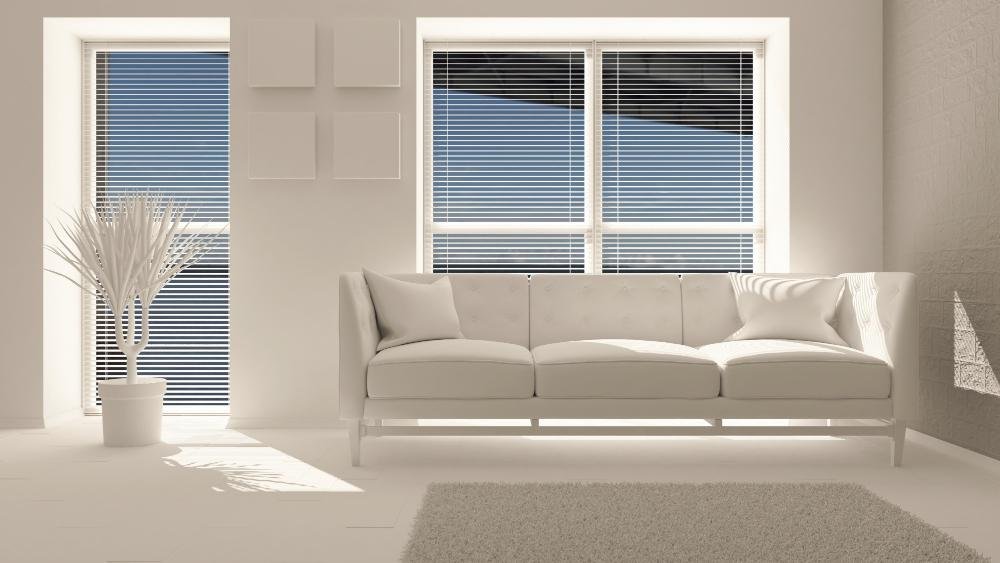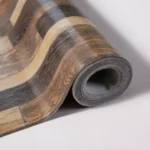Roman blinds are a timeless window treatment that can add elegance and functionality to any room. When designed with care and attention to detail, bespoke Roman blind can elevate your interior design while providing practical light control and privacy. This comprehensive guide will explore the best practices for designing custom Roman blind, from initial planning to fabric selection and beyond.
Understanding Roman Blinds
Roman blinds are a type of window covering that folds up into neat horizontal pleats when raised and lies flat when lowered. Unlike standard roller blinds, Roman blinds maintain their structured appearance even when fully extended, creating a soft and luxurious look. Bespoke Roman Blinds are custom-made to fit specific window dimensions and tailored to complement the room’s decor.
These versatile window treatments come in various styles, including:
- Classic Roman blinds: Feature evenly spaced horizontal folds when raised
- Relaxed Roman blinds: Have a slight curve at the bottom when lowered
- Cascade Roman blinds: Incorporate cascading folds for a more dramatic look
- Flat Roman blinds: Maintain a smooth, flat appearance when lowered
Understanding the different styles and their visual impact is crucial for designing bespoke Roman blinds that perfectly suit your space and personal taste.
Planning and Measurement
The foundation of any successful bespoke Roman blind design lies in accurate planning and measurement. Follow these steps to ensure a perfect fit:
- Determine mounting type: Decide whether you want an inside mount (within the window frame) or an outside mount (covering the entire window and frame).
- Measure precisely: For inside mounts, measure the width at three points (top, middle, and bottom) and use the narrowest measurement. For outside mounts, measure beyond the window frame for optimal coverage.
- Consider stack height: This is the space the blind occupies when fully raised. Account for this when planning your design to ensure unobstructed views when desired.
- Factor in operating systems: Decide between cord-operated, chain-operated, or motorized systems, and plan accordingly for their installation.
- Consider light gaps: Be aware of potential light gaps on the sides of inside-mounted blinds and plan for adequate overlap with outside mounts.
By taking the time to plan and measure accurately, you’ll create a solid foundation for your bespoke Roman blind design.
Fabric Selection
Choosing the right fabric is crucial for both the aesthetic appeal and functionality of your Roman blinds. Consider the following factors when selecting fabrics:
- Weight: Opt for medium-weight fabrics that hang well and create crisp folds. Avoid very heavy fabrics that may be difficult to operate or very light fabrics that may not hold their shape.
- Durability: Select fabrics that can withstand frequent use and exposure to sunlight without fading or deteriorating.
- Light filtration: Determine whether you want sheer, semi-opaque, or blackout fabrics based on the room’s lighting needs.
- Pattern and texture: Consider how patterns and textures will look when the blind is both raised and lowered. Large patterns may be lost in the folds, while small, intricate patterns can create visual interest.
- Maintenance: Choose fabrics that are easy to clean and maintain, especially for high-traffic areas or rooms prone to moisture.
- Color coordination: Select colors that complement your existing decor or choose a statement fabric to create a focal point in the room.
When designing bespoke Roman blinds, don’t hesitate to request fabric samples to see how they look and feel in your space before making a final decision.
Lining Options
Lining plays a crucial role in the functionality and appearance of Roman blinds. Consider these lining options:
- Standard lining: Provides a basic layer of protection and improves the blind’s structure.
- Interlining: An additional layer between the face fabric and lining that enhances insulation and creates a fuller appearance.
- Blackout lining: Blocks out light completely, ideal for bedrooms or media rooms.
- Thermal lining: Offers improved insulation, helping to keep rooms cooler in summer and warmer in winter.
- Sun-resistant lining: Protects the face fabric from sun damage and fading.
When designing bespoke Roman blinds, consider combining different lining options to achieve the desired look and functionality. For example, you might use both interlining and blackout lining for a luxurious, light-blocking window treatment.
Design Details and Embellishments
The beauty of bespoke Roman blinds lies in the ability to incorporate unique design details and embellishments. Consider these options to add personality to your blinds:
- Decorative tapes: Add contrasting or complementary tapes along the edges of the blind for a polished look.
- Trims and braids: Incorporate decorative trims or braids along the bottom edge or sides of the blind for added visual interest.
- Contrast banding: Use a contrasting fabric at the bottom of the blind to create a striking visual effect.
- Shaped bottoms: Design the bottom edge of the blind with scallops, points, or other decorative shapes.
- Embroidery: Add custom embroidery to the face fabric for a truly unique touch.
- Layering: Combine Roman blinds with other window treatments, such as sheer curtains or valances, for a multi-dimensional look.
When incorporating these design elements, ensure they complement the overall style of the room and don’t overwhelm the space. Sometimes, simple and elegant designs can be the most effective.
Operating Systems and Safety
Choosing the right operating system for your bespoke Roman blinds is essential for both convenience and safety. Consider these options:
- Cord-operated: Traditional system using a cord to raise and lower the blind. Ensure cords are secured with child-safe devices.
- Chain-operated: Uses a continuous loop chain for smooth operation. Must be installed with tension devices for safety.
- Cordless: Eliminates dangling cords for a cleaner look and enhanced child safety. Operated by gently pulling or pushing the bottom of the blind.
- Motorized: Offers the ultimate in convenience, allowing operation via remote control or smart home integration.
- Spring-assisted: Combines the benefits of cordless operation with easier lifting for larger or heavier blinds.
When designing bespoke Roman blinds, prioritize safety, especially in homes with children or pets. Opt for cordless or motorized systems where possible, and always ensure that any cords or chains are properly secured and out of reach.
Installation Considerations
Proper installation is crucial for the functionality and appearance of your bespoke Roman blinds. Consider these factors during the design process:
- Mounting brackets: Ensure the design accounts for sturdy mounting brackets that can support the weight of the blind.
- Headrail: Choose a headrail system that complements the blind’s design and can accommodate the chosen operating system.
- Batten positioning: Plan the placement of horizontal battens to create even folds when the blind is raised.
- Clearance: Allow for adequate clearance around windows, especially for outside-mounted blinds, to ensure smooth operation.
- Multiple blinds: When designing for wide windows that require multiple blinds, consider how they will align and operate together.
- Professional installation: While DIY installation is possible, professional installation can ensure your bespoke Roman blinds function perfectly and look their best.
By considering these installation factors during the design phase, you can avoid potential issues and ensure a seamless final result.
Maintenance and Care
Designing bespoke Roman blinds with maintenance in mind can help ensure their longevity and continued beauty. Consider these maintenance aspects:
- Fabric care: Choose fabrics that can be easily cleaned according to your lifestyle needs. Some may be suitable for vacuuming, while others may require professional cleaning.
- Spot-cleaning: Design with fabrics that allow for spot-cleaning of minor stains without damaging the overall appearance.
- Dust resistance: Consider treatments or fabrics that naturally repel dust to minimize frequent cleaning.
- Removable panels: Design blinds with easily removable fabric panels for thorough cleaning or replacement if needed.
- UV protection: Incorporate sun-resistant linings or treatments to prevent fading and extend the life of your blinds.
- Operating system maintenance: Choose systems that are easy to maintain and, if necessary, repair or replace.
By factoring in maintenance and care during the design process, you can create bespoke Roman blinds that not only look beautiful but also stand the test of time with proper care.
Customization for Different Room Types
Designing bespoke Roman blinds requires consideration of the specific needs and characteristics of different room types. Here are some customization tips for various spaces:
- Living rooms:
- Focus on balancing light control and privacy
- Consider layering with sheer curtains for versatility
- Use statement fabrics to create a focal point
- Bedrooms:
- Prioritize blackout or room-darkening options
- Choose soothing colors and patterns that promote relaxation
- Opt for quiet operating systems to minimize disturbances
- Kitchens:
- Select moisture-resistant and easy-to-clean fabrics
- Consider semi-opaque fabrics to allow natural light while maintaining privacy
- Use colors or patterns that complement cabinetry and countertops
- Bathrooms:
- Choose water-resistant and mildew-resistant fabrics
- Opt for materials that can withstand high humidity
- Consider privacy factors when selecting fabric opacity
- Home offices:
- Design for glare reduction on computer screens
- Incorporate sound-absorbing fabrics to improve acoustics
- Choose colors that promote focus and productivity
- Sunrooms:
- Select UV-resistant fabrics to prevent fading
- Consider thermal-lined options for temperature control
- Use light-filtering fabrics to maintain a bright atmosphere while reducing glare
- Children’s rooms:
- Prioritize child-safe operating systems
- Choose durable, easy-to-clean fabrics
- Incorporate playful patterns or colors that can grow with the child
By tailoring your bespoke Roman blind designs to the specific needs of each room, you can create functional and beautiful window treatments throughout your home.
conclusion
In conclusion, designing bespoke Roman blind requires careful consideration of various factors, from initial planning and measurement to fabric selection, operating systems, and room-specific customization. By following these best practices, you can create stunning, functional, and long-lasting Roman blinds that perfectly complement your interior design while meeting your practical needs for light control and privacy. Remember that the key to successful bespoke design lies in attention to detail and a thorough understanding of both the technical aspects and aesthetic considerations of Roman blinds. With thoughtful planning and execution, your custom Roman blinds will become a cherished feature of your home for years to come.



